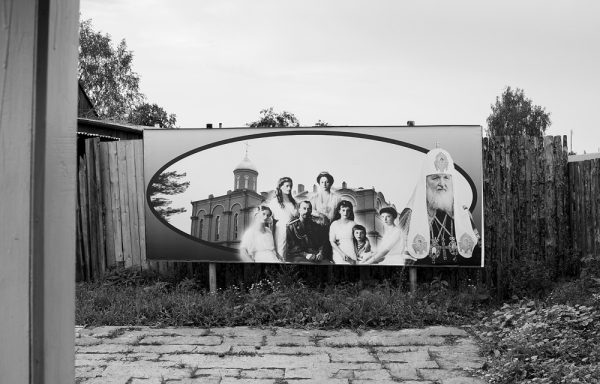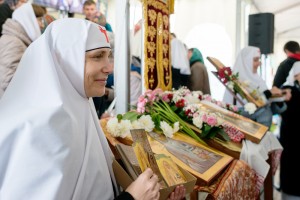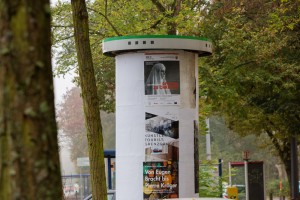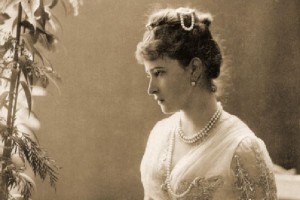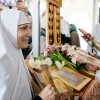The town of Alapaevsk in the Urals did not change much in the last one hundred years. Most of the buildings there are one or two storeys high. The streets are paved only in the centre of town. Located almost two thousand kilometres away from Moscow, it seems not just distance but an entire era separates the capital and this little place.
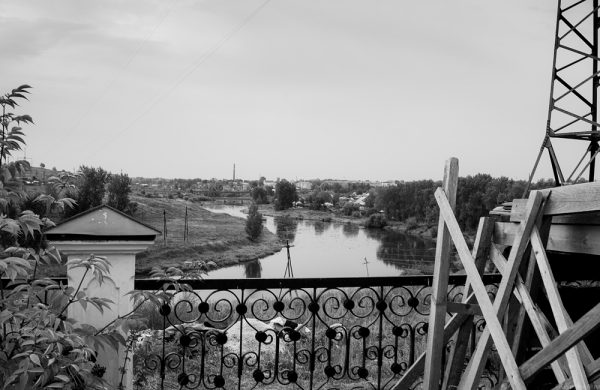
We are walking down one of the outlying streets of the town, skirting around bushy thistles and nettles, heading towards Lenin Street, to follow the path taken by Grand Duchess Elizabeth and seven other people.
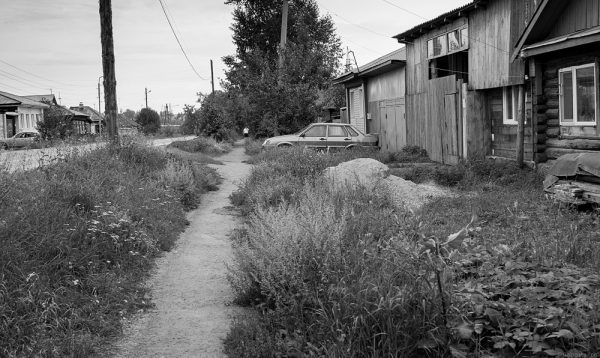
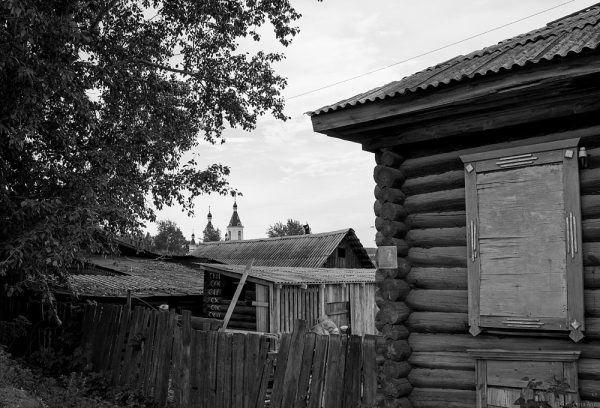
It is here, in Lenin Street, that the Napolnaia School is located, where the arrested Romanovs, Rassophore Nun Barbara, the cell attendant of Grand Duchess Elizabeth, and Fedor Remez, Secretary of Grand Duke Sergei Mikhailovich, were brought in 1918.
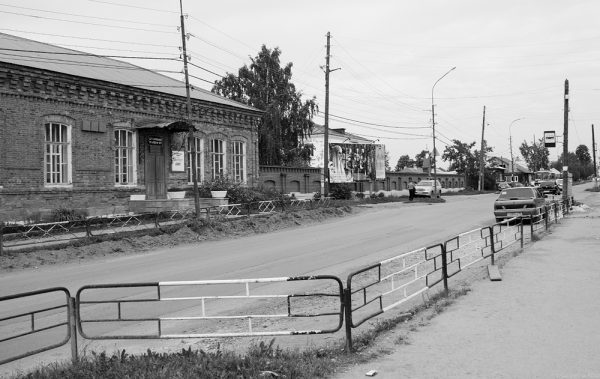
The school was referred to as Napolnaia, because it stood in a field (in Russian “na pole”) on the outskirts of Alapaevsk. It still functions as a school, as a polling station, and as a Memorial room for the martyrs of Alapaevsk.
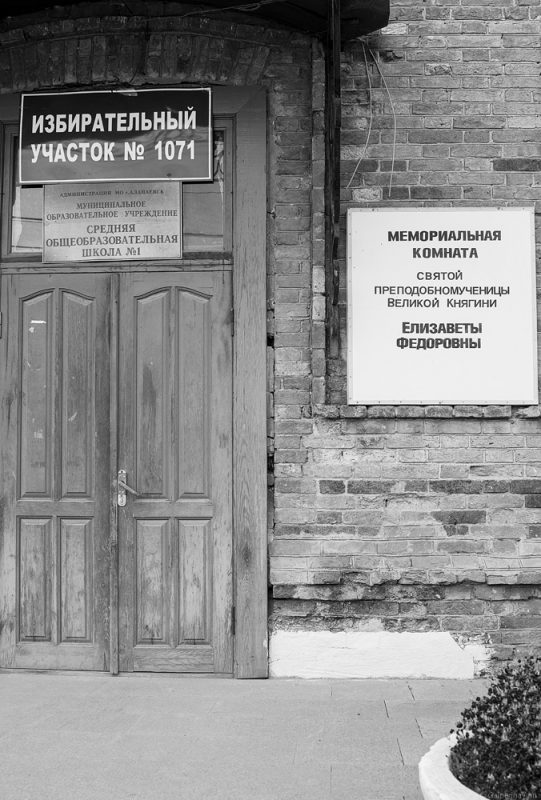
At first, the prisoners’ conditions were tolerable – they were allowed to walk about the town, they planted a garden next to the school. The garden still remains – it is now located in the grounds of the newly founded women’s convent in honour of the New Martyr Grand Duchess Elizabeth.
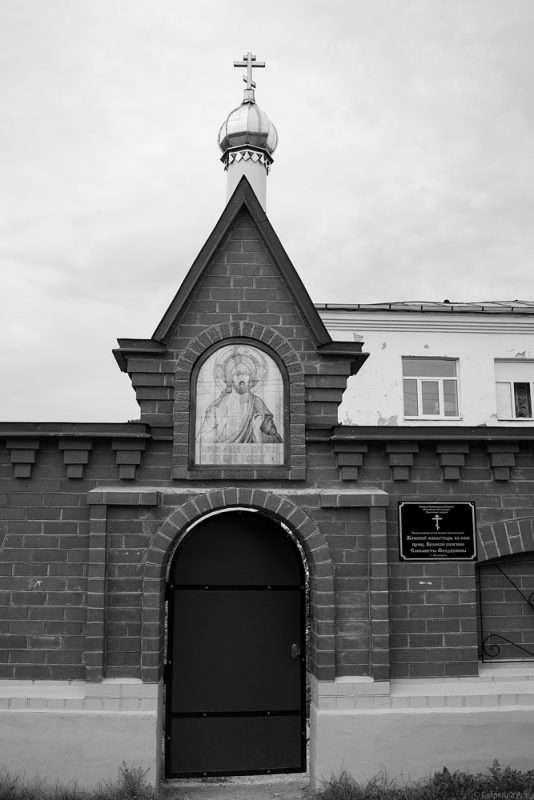
The convent was set up in the building of an old kindergarten. There are not many monastics in it. This is where pilgrims can stay in Alapaevsk.
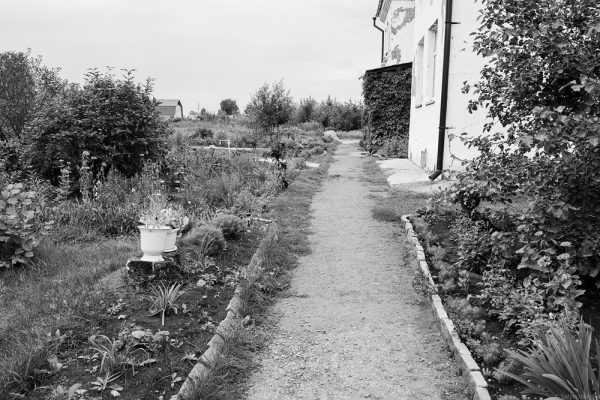
The house church of the monastery was set up in one of the rooms on the second floor.
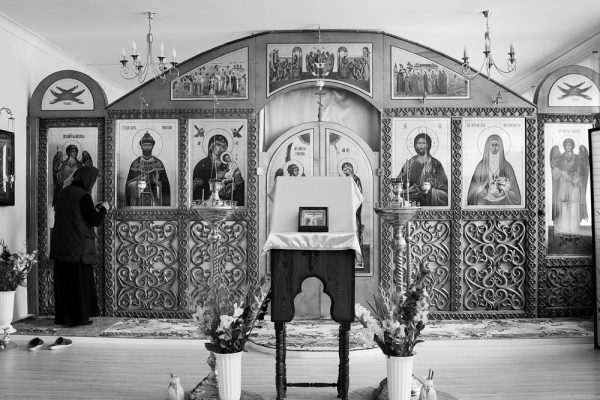
This is where Vera Vikentievna brings her grand-daughter Christina to venerate the miraculous icon of New Martyr Elizabeth. Christina has had problems with her legs since birth. “Pray to the Reverend Mother to be healed!” whispers the grandmother to the little girl.
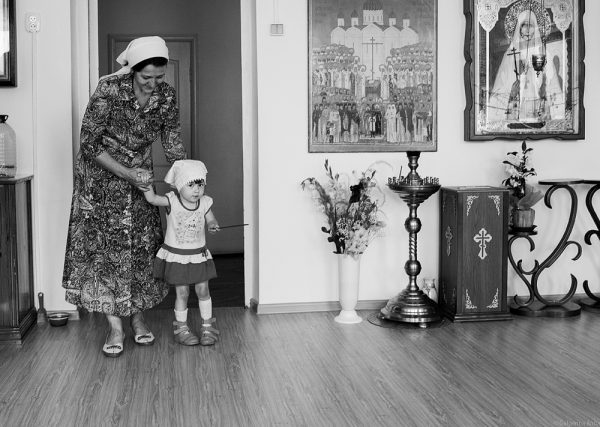
The miraculous icon of New Martyr Elizabeth and the reliquary with a piece of her relics.
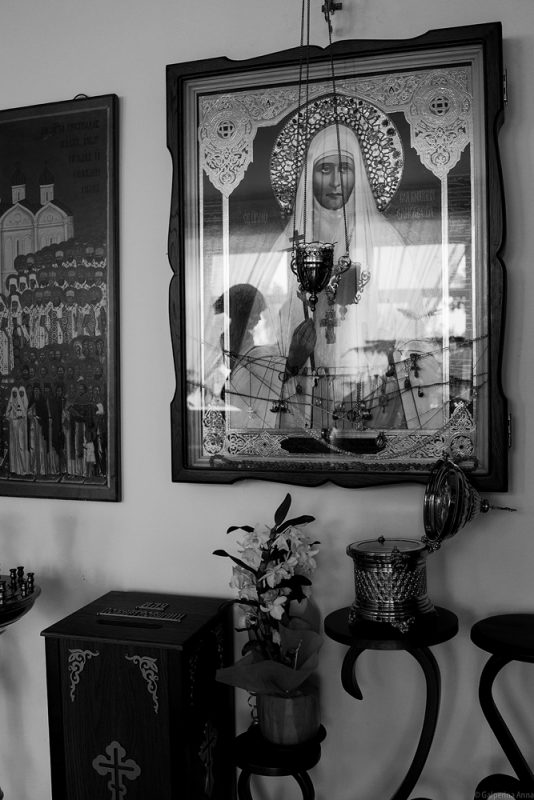
Pilgrims are always welcome at the female monastery. There are special rooms here for people who come to venerate New Martyr Elizabeth and honour her memory at the place of her death.
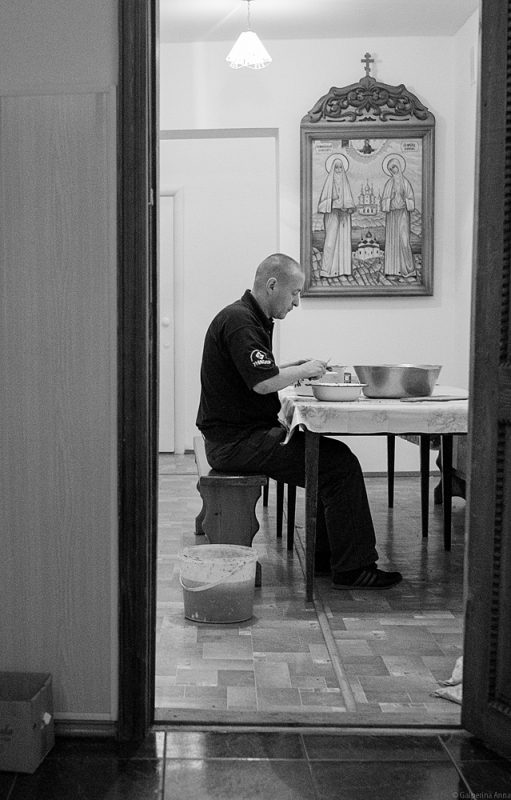
They sat us down at the Nuns’ table and served us lunch. Mother Olympiada, the Abbess of the convent, reads the prayer of thanksgiving after lunch.
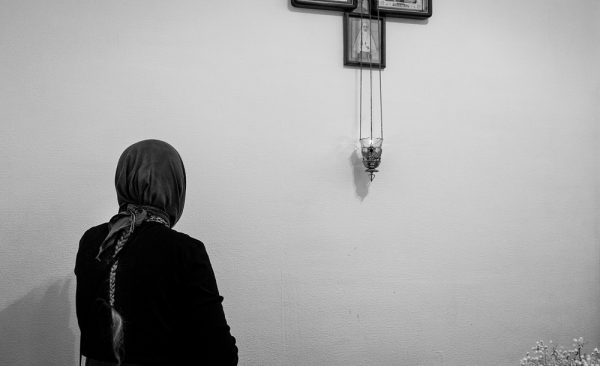
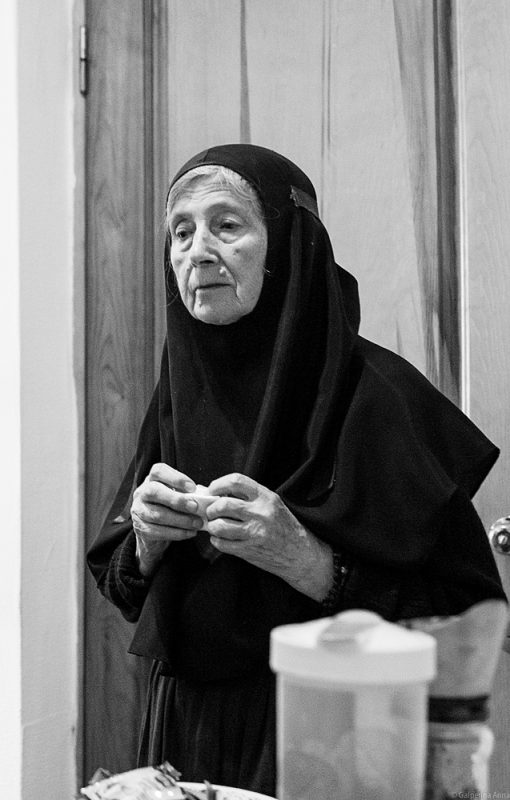
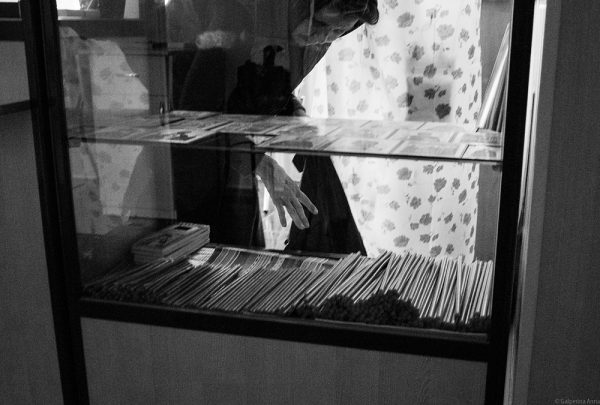
From the window we can see the Napolnaia School. “Can you see the linden and the birch? They were planted by St. Elizabeth and St. Barbara,” tells us one of the monastery residents.
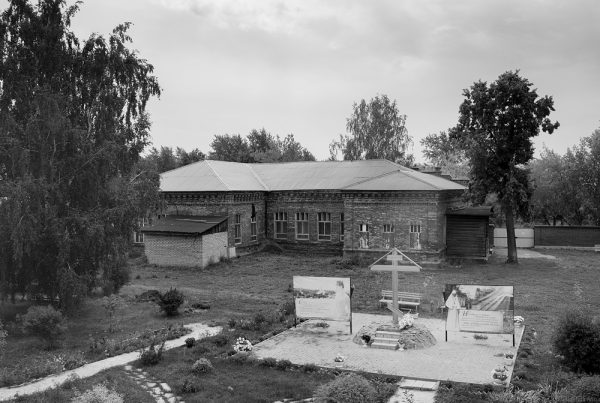
The Napolnaia School is on holidays now. The desks have been moved to the corridors, the classrooms are empty. There is only one room that is open, the one where Grand Duchess Elizabeth and Nun Barbara stayed in 1918.
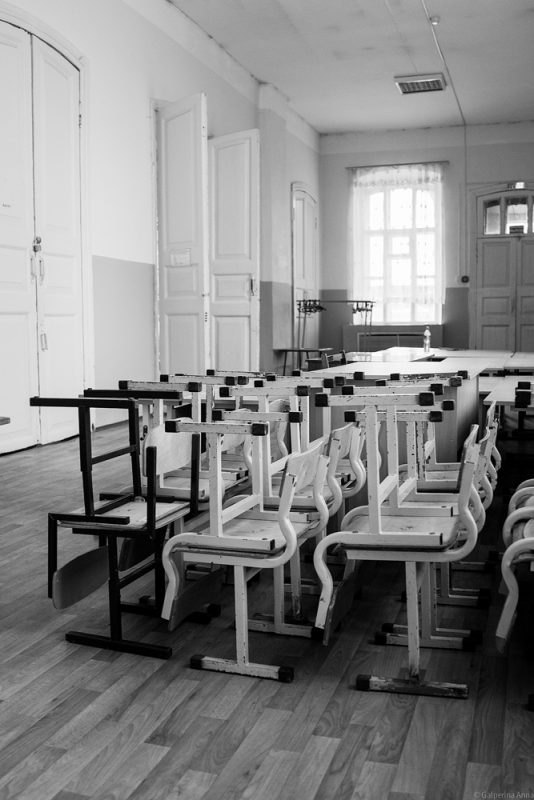
These days it is a Commemorative room.
On June 21 an order came from Ekaterinburg to put the detainees under prison conditions. “They confiscated all their belongings – their shoes, underwear, clothing, pillows, gold, and money. Nothing was left them except the clothes and shoes they wore as well as two changes of underwear…” wrote N.A. Sokolov in his book “The Murder of the Royal Family.” Prisoners were forbidden to go out into town and to correspond, their food rations were also decreased. Almost nothing remained of their personal belongings.
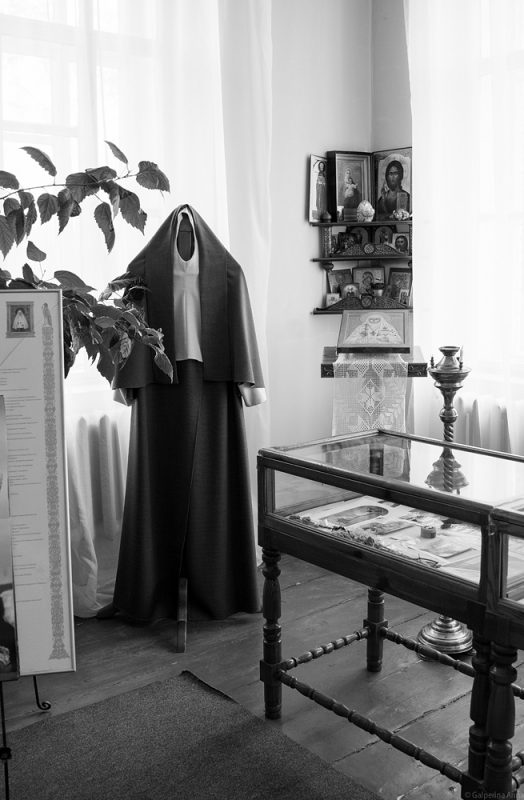
Guided tour of the Commemorative room.
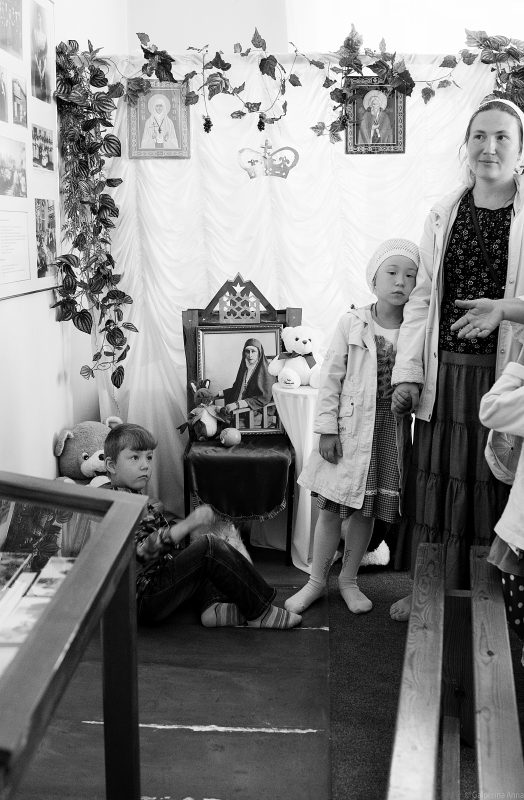
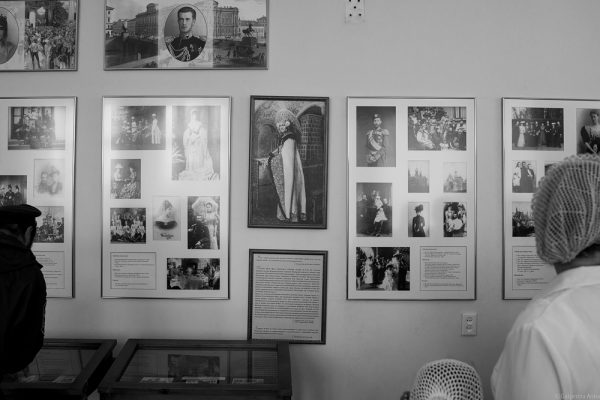
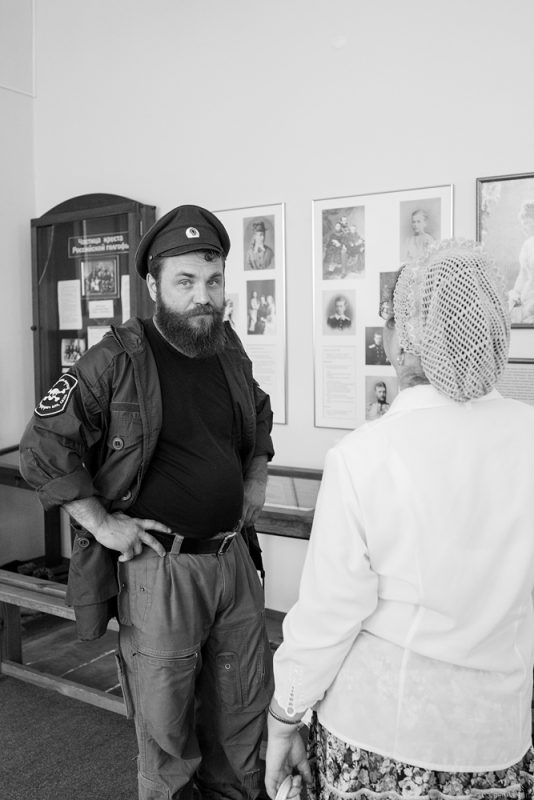
A visitor writes a review of the tour.
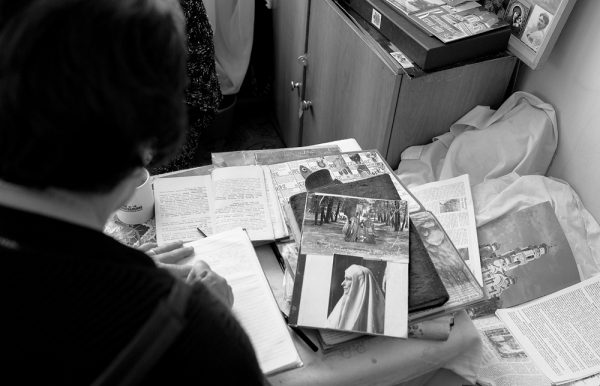
From the Napolnaia School the road takes us along the outskirts of town towards the village Nizhniaia Siniachikha.
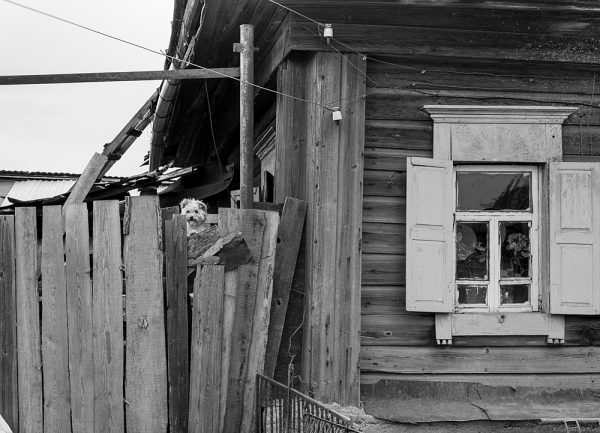
This is where the eight people held in the Napolnaia School were clandestinely taken one by one.
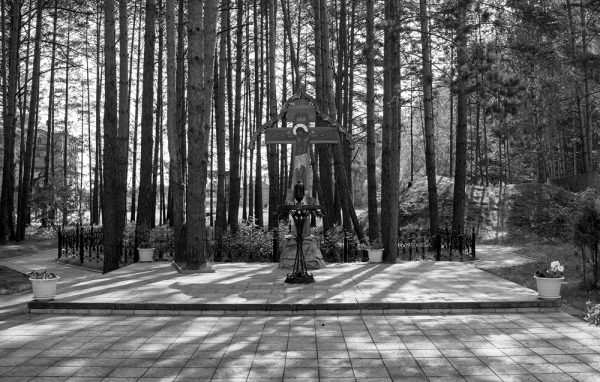
A rumour of the prisoners’ escape was spread in town. However, it wasn’t like that at all. They were taken fourteen kilometres out of town to the old mines. “We walked into the building where the women were held through an unlocked door, woke them up and told them to get dressed immediately… They obeyed us without a word. We tied their hands behind their backs, then blindfolded them, took them outside, and sat them down in a wagon purposefully stationed next to the school, and sent them to the place of destination.” (Recollections of Vasily Riabov, one of the people who took part in the assassination).
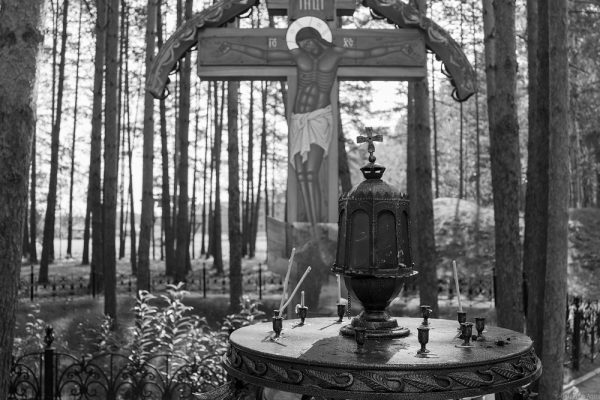
The prisoners were taken out of town to an abandoned mine belonging to the iron minery Nizhniaia Siniachikha; they were hit on the head with the back of an axe, then thrown into the mine. Several grenades were then thrown into the mine, some of which did not explode, afterwards tree trunks and logs were thrown in, and then everything was covered by soil. These days, where the mine was, there is a small pit, overgrown with grass and trees.
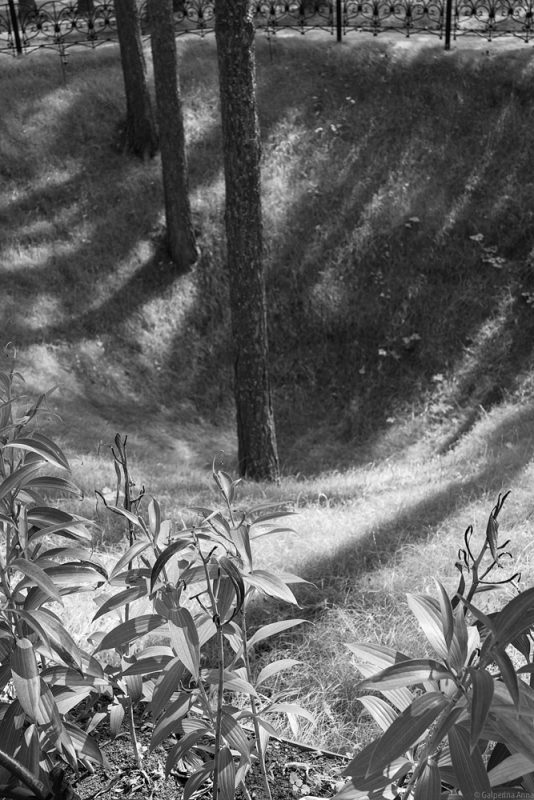
When the bodies were later recovered from the mine, they found out that some of the victims had died almost instantly, while others had survived the fall, but then died from starvation and injuries. Grand Duchess Elizabeth did not die straight away. Though wounded and injured herself, she was administering aid to Prince Ioann – she bandaged the wound on his head with a strip torn from her apostolnik (epimandylion).
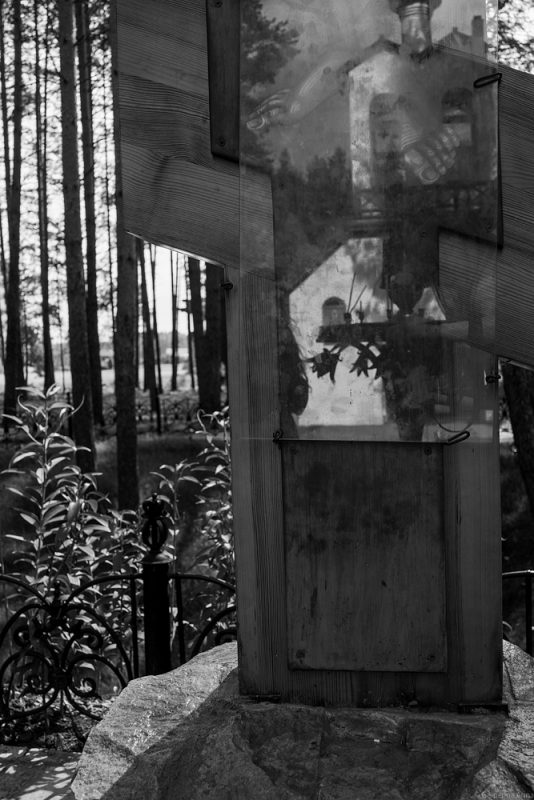
In 1991 a wayside cross was erected next to the collapsed mine. In the following year of 1992 a chapel in honour of St. Elizabeth was built. In 1995 the construction of a male monastery in honour of the New Martyrs of Russia began there.
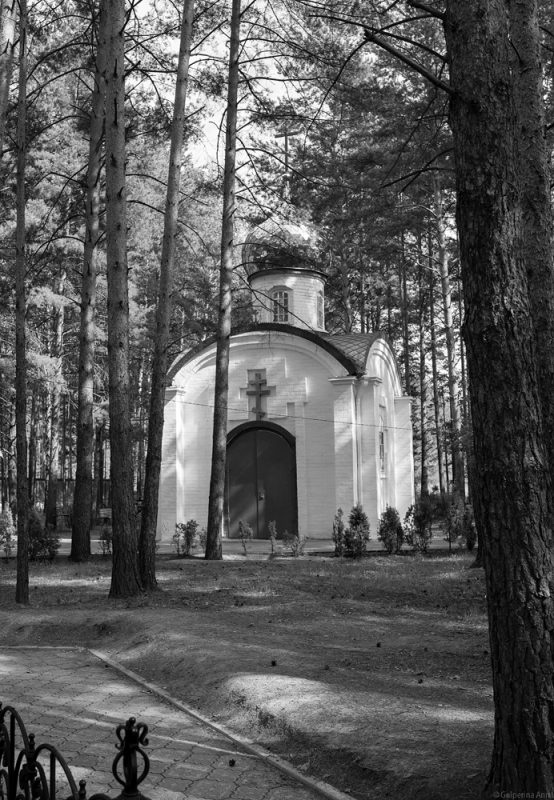
Researchers maintain that the decision to execute the Alapaevsk prisoners was made independently by the Bolshevik Party of Alapaevsk, that it wasn’t sanctioned by the Urals’ Regional Committee of the Russian Communist Party of Bolsheviks or the Urals’ Regional Council. However, the interrogation reports of Peter Startsev of the Cheka, who took part in the assassination, indicate that the “assassination of the august prisoners was done by order of Ekaterinburg.” Investigator N.A. Sokolov concludes that “both the Ekaterinburg and the Alapaevsk assassinations were the result of a decision made by the same people.”
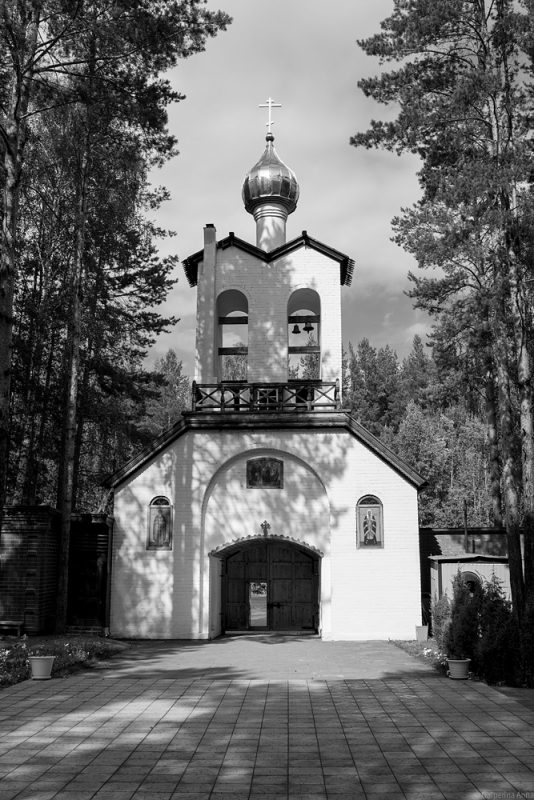
In the 1998 resolution of the Russian General Prosecutor’s Office to conclude the criminal investigation of case № 18/123666-93 “On the investigation of the circumstances of the deaths of the members of the Imperial House of Russia and their attendants between 1918-1919” twenty-two names are mentioned along with two workmen of the factory of Verkhne-Siniachikha not identified by the investigation, as those who had organized and performed “the premeditated assassination of members of the Russian Imperial House and their attendants” on the night of July 18-19.
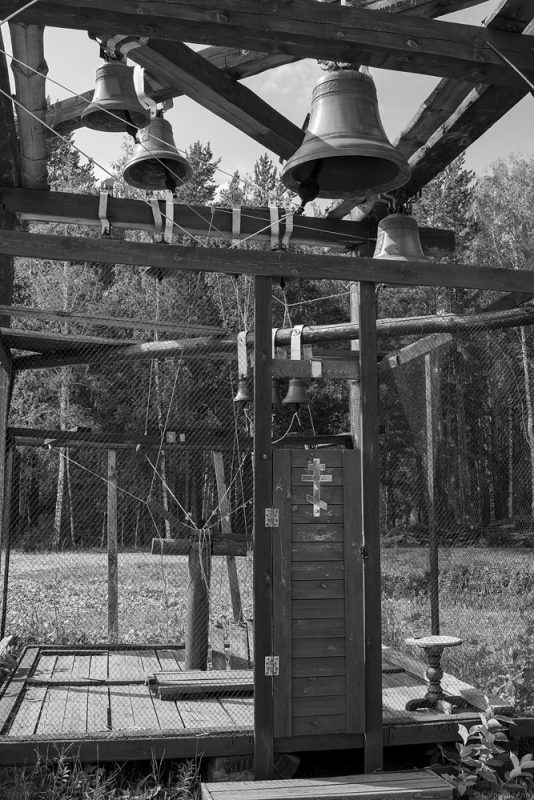
On July 6, 1996 the cornerstone was laid for the monastery church.
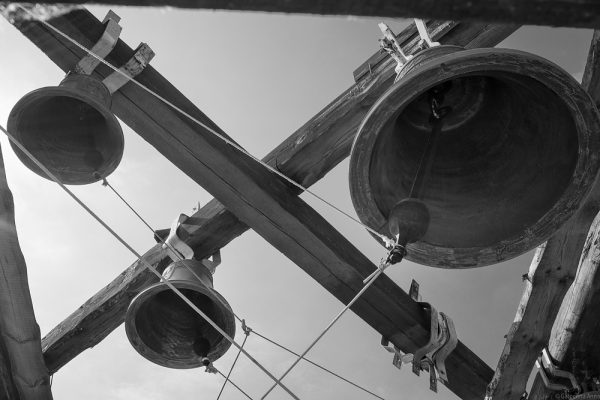
The first Divine Liturgy was served in the unfinished church in 1998, and on November 4, 2000 the first service was officiated in the completed church.
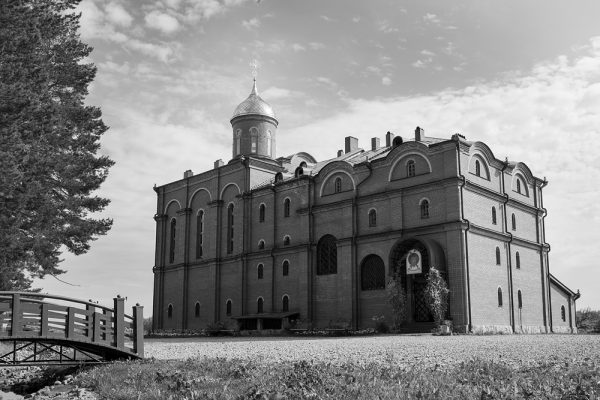
On July 18, 2001 the church was consecrated in honour of all the New Martyrs of Russia by His Grace Vikenty, Archbishop of Ekaterinburg and Verkhoturie.
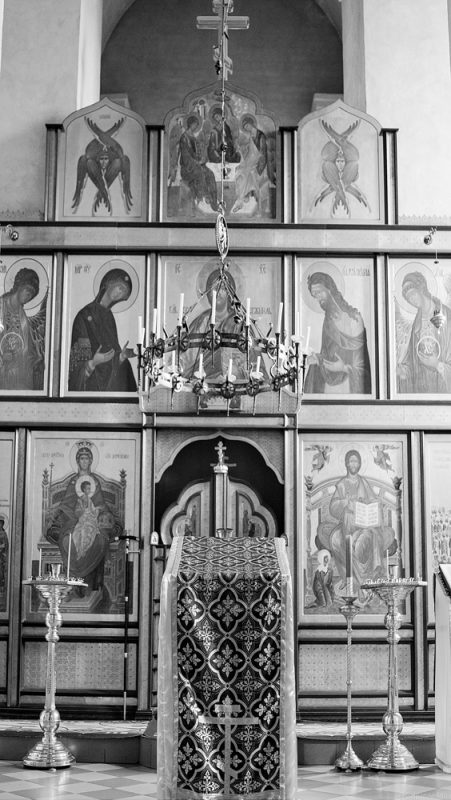
The monastery church houses pieces of the relics of Holy New Martyrs Elizabeth and Barbara and Holy New Hieromartyr Sergii (Srebrianskii) brought from Jerusalem.
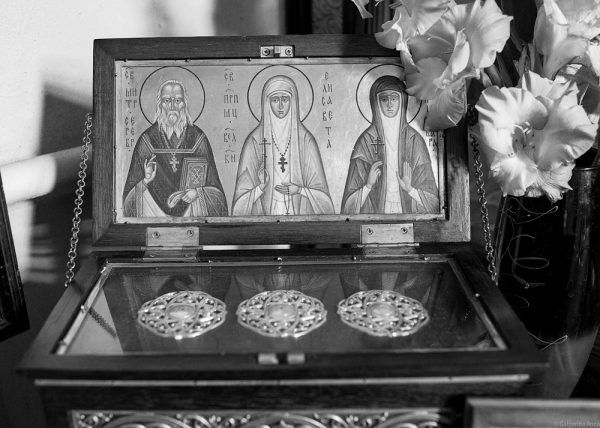
Icon of the New Martyr Elizabeth.
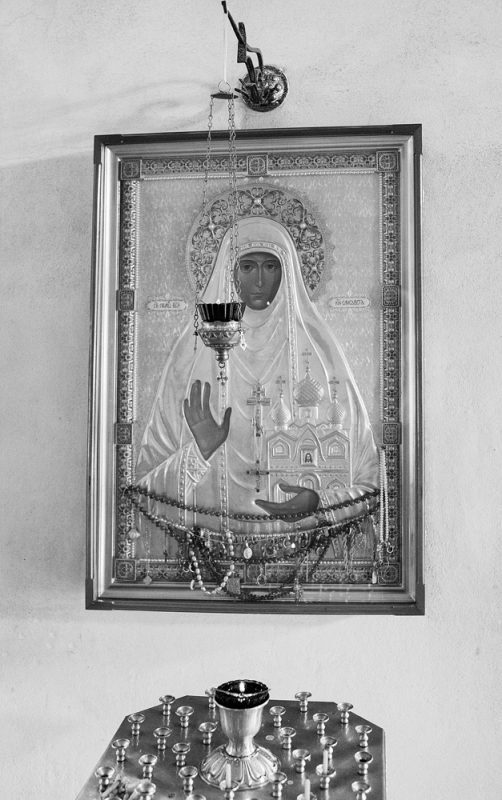
On September 28, 1918 Alapaevsk was occupied by the army of Admiral A.V. Kolchak. Senior militiaman T. Malshikov was assigned the task of finding the bodies of the assassinated Princes. He managed to find witnesses who “on the night of July 18 were returning to Alapaevsk by the Siniachikha road and around eleven or twelve o’clock met a whole “train” of horses heading towards the factory of Verkhne-Siniachikha.” On October 19, they found a peaked cap that belonged to one of the Princes, and then the bodies themselves, which it took them four days to recover from the mine.
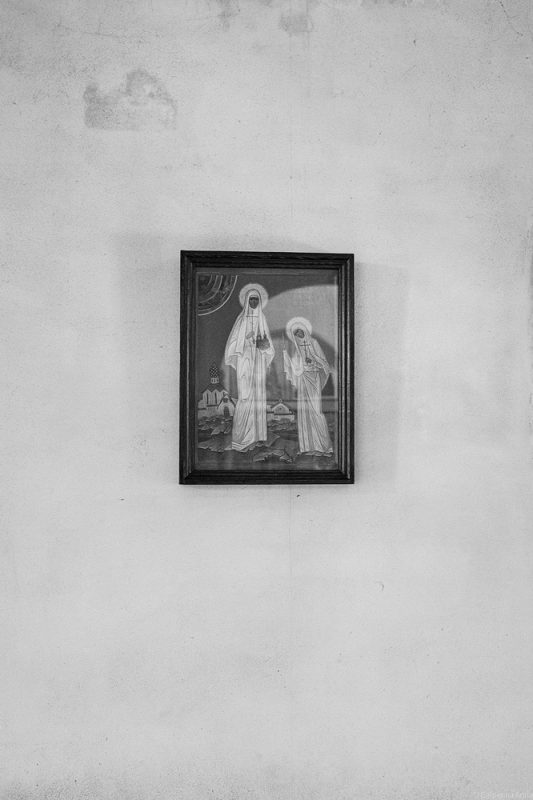
Inside the upper church of the New Martyrs of Russia.
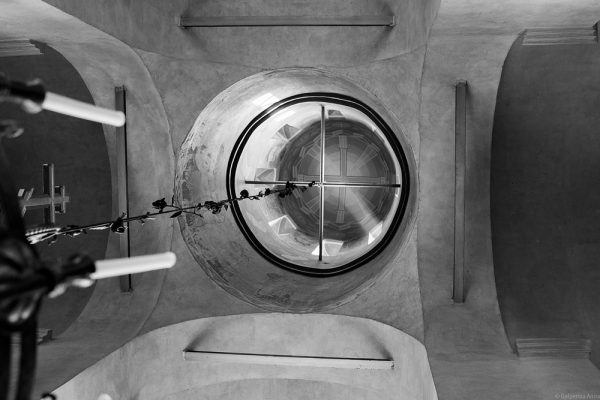
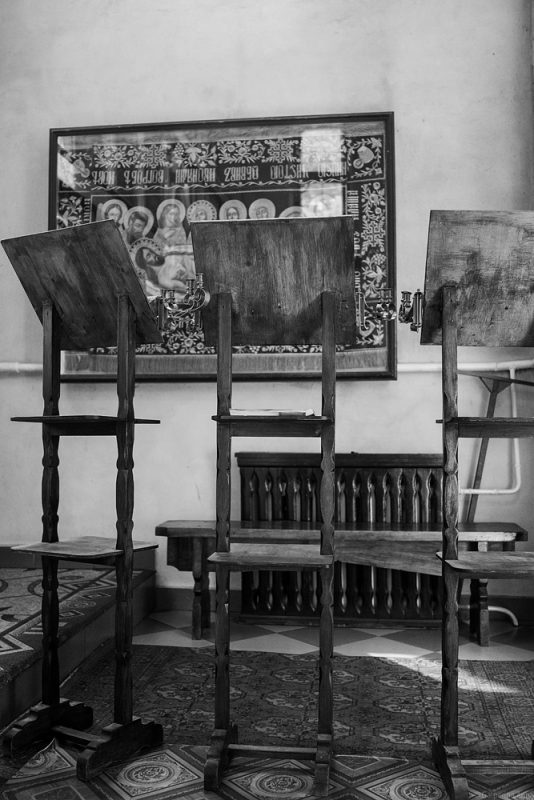
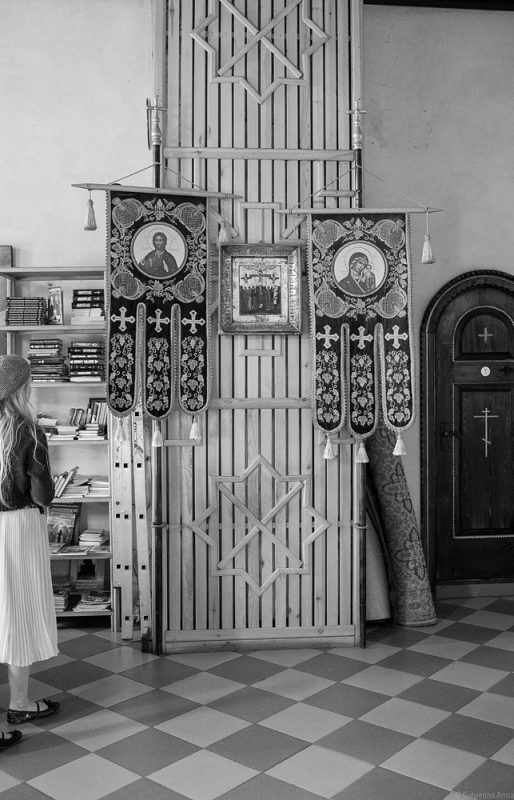
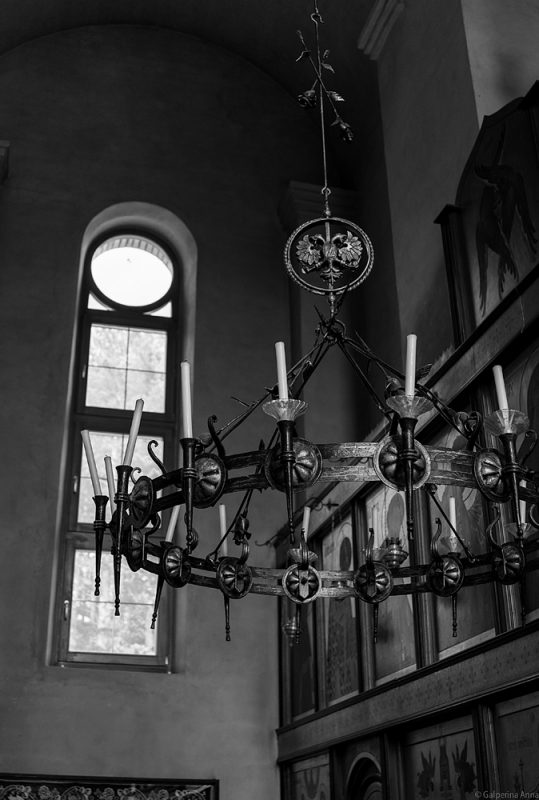
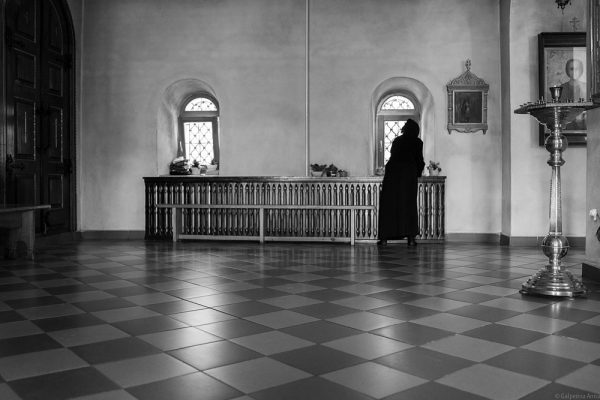
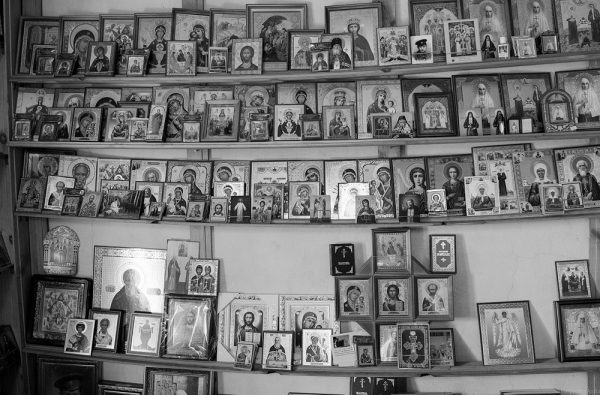
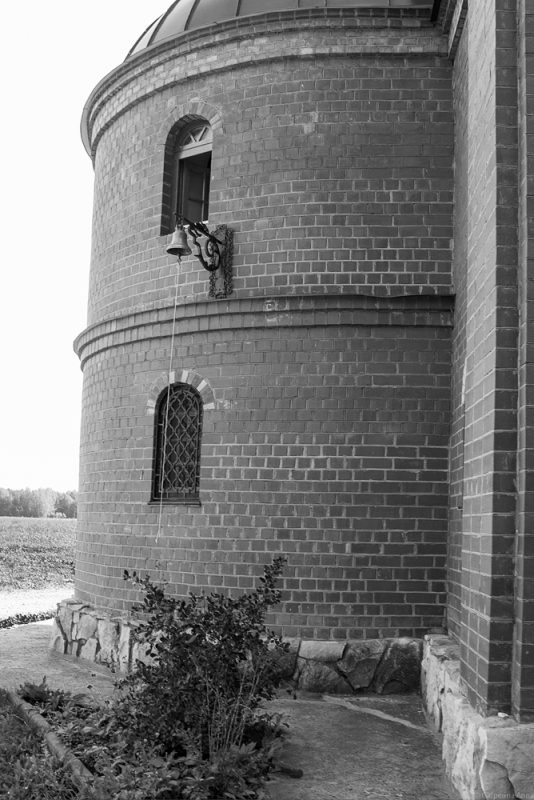
When the bodies were recovered from the mine, they were sent to the morgue next to the cemetery of the church of St. Catherine.
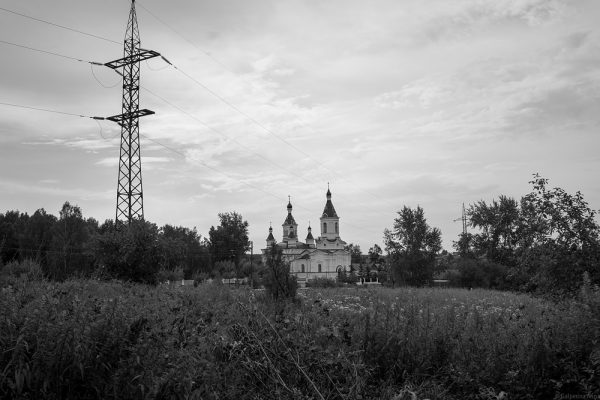
There, a medical examination and a forensic autopsy were conducted.
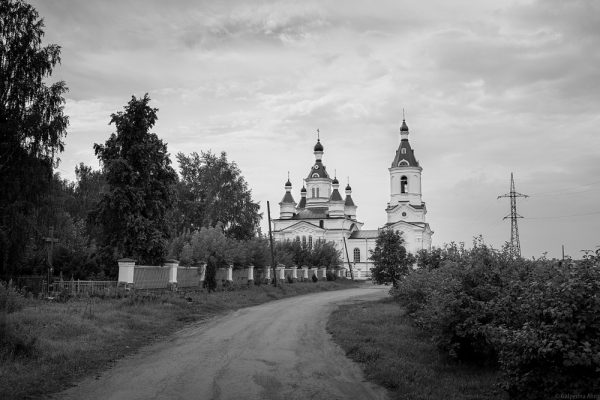
Where the morgue once stood, or “catavernaia” (from the word cadaver), as it was then called, there is now a wayside cross.
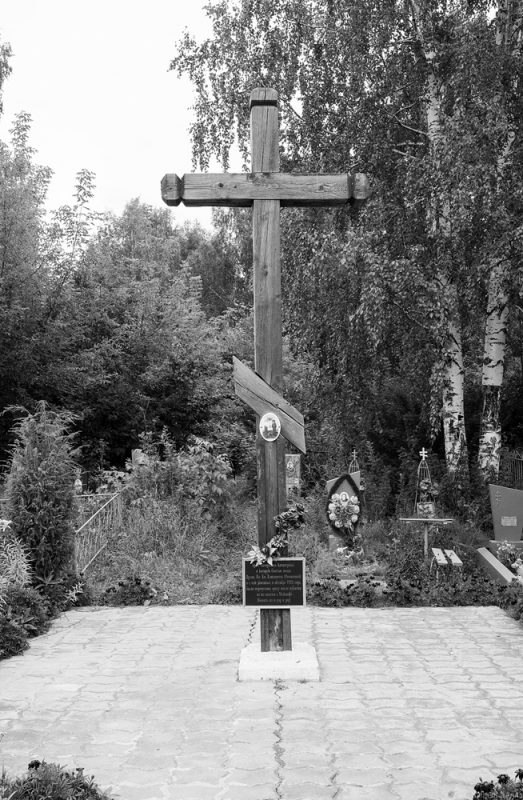
Upon identification, the bodies were washed, placed in coffins, and put inside the church of St. Catherine.
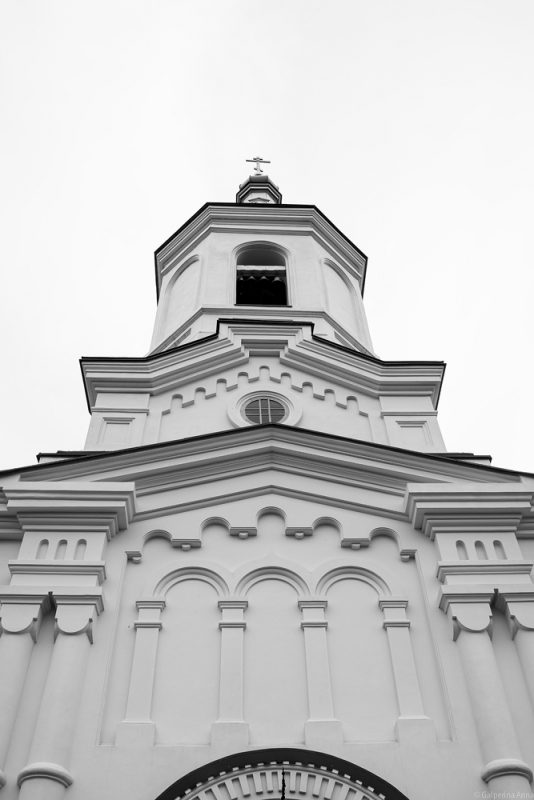
The “Russkaia Gazeta” (Paris, 1924) wrote that, “According to the people who participated in recovering the bodies from the mine, only the body of Grand Duke Sergei Mikhailovich had a gun wound at the back of his head, in the occipital. All the others had been thrown into the mine alive and died from the wounds inflicted by the fall and from hunger.
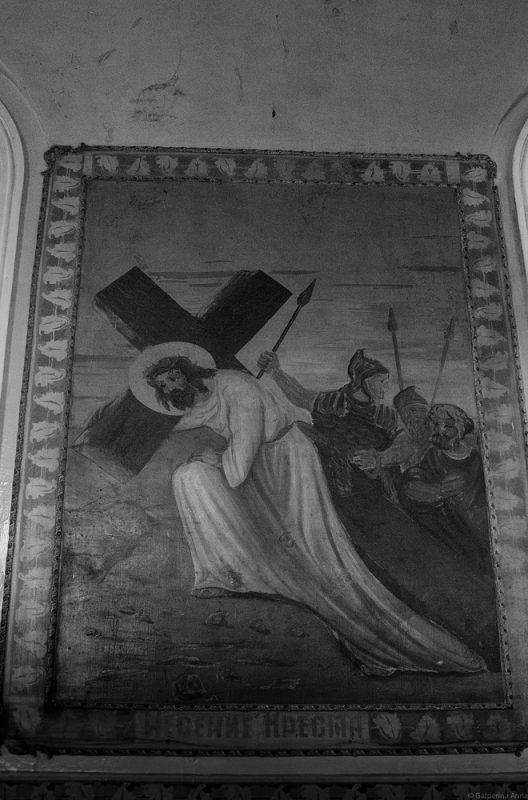
Despite the fact that all the bodies had been in the mine for a few months, the body of the Grand Duchess Elizabeth was found completely incorrupt. A smile was preserved on her face, her right hand formed the sign of a cross, as if giving a blessing. The body of Prince Ioann Konstantinovich likewise had very few traces of corruption (in the area of the chest). All the other bodies suffered corruption to some extent.”
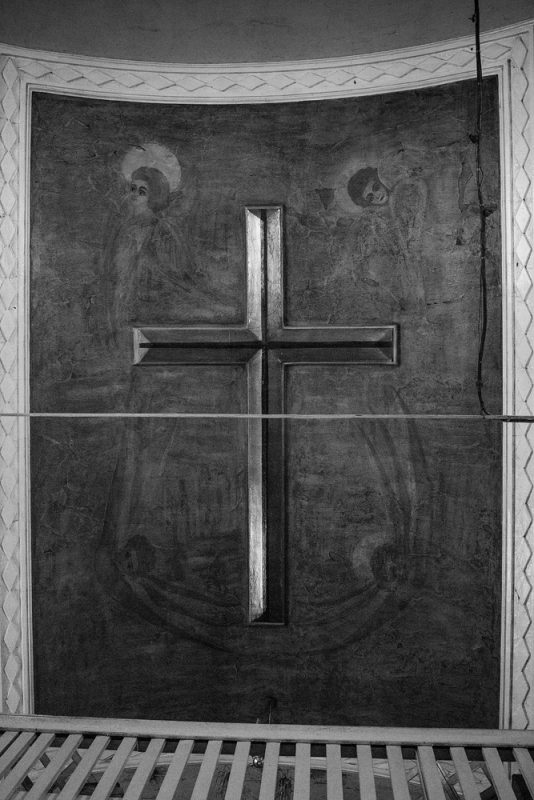
On October 31, 1918 thirteen priests served a Vigil for the Departed in front of the coffins.
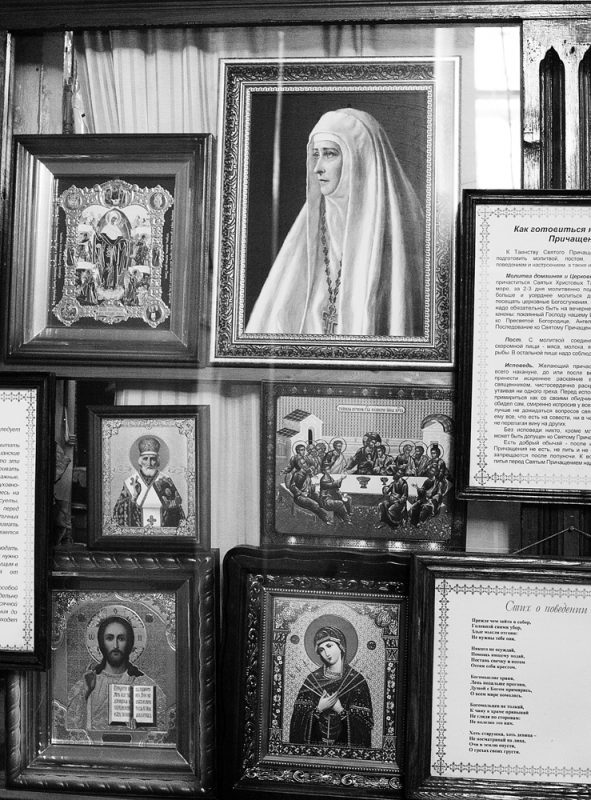
These days the church of St. Catherine is a podvorie (metochion) of the male monastery.
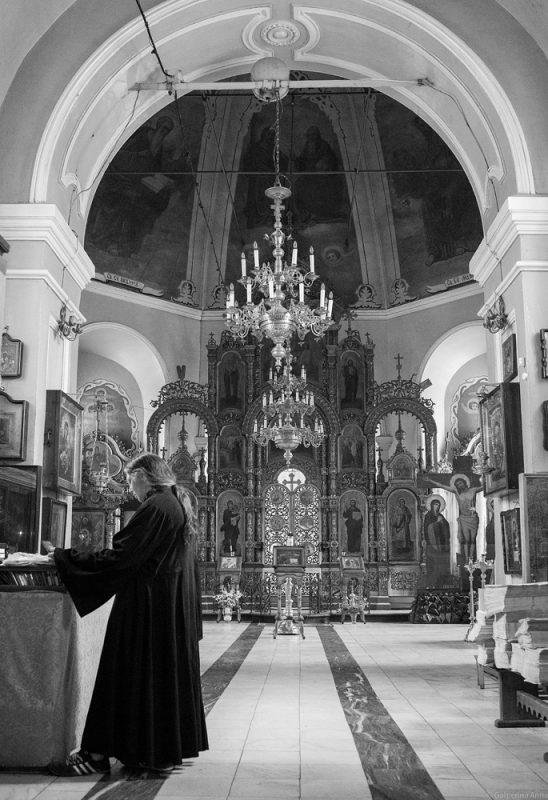
This wooden church was moved from the village of Nevianskoe already in 1792.
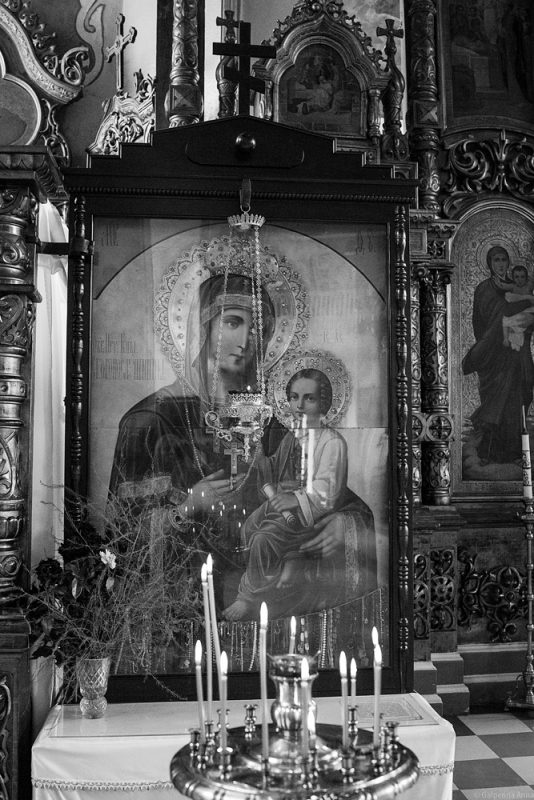
The stone church was built in 1915.
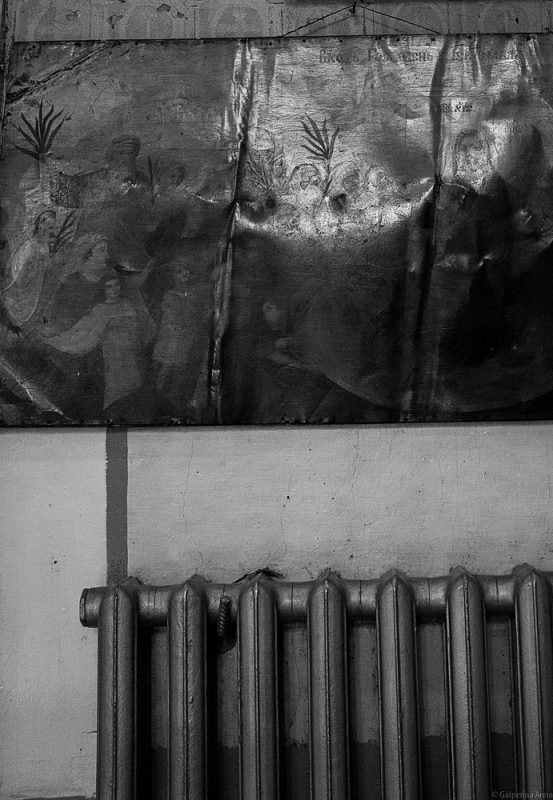
The church of St. Catherine was never closed down during the Soviet times.
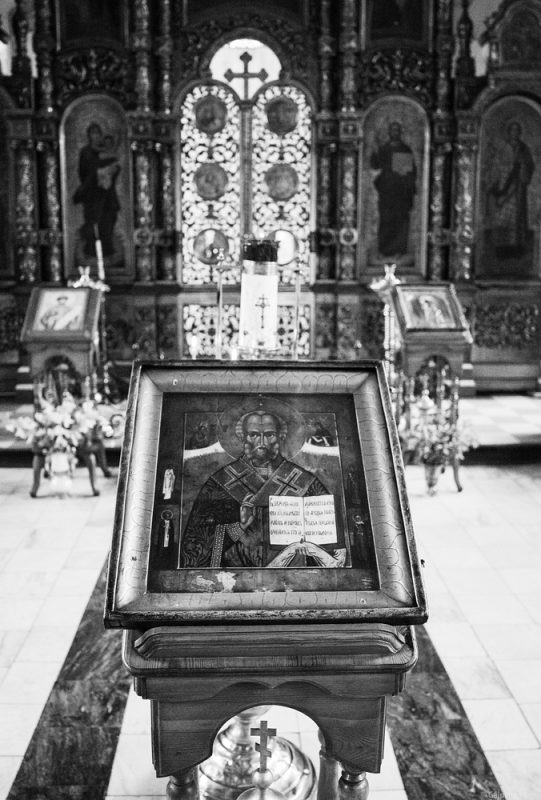
The road from the church to the monastery. The enormous procession from the Alapaevsk Holy Trinity cathedral walked along this road to the cemetery church. After a panikhida the coffins were moved to the cathedral.
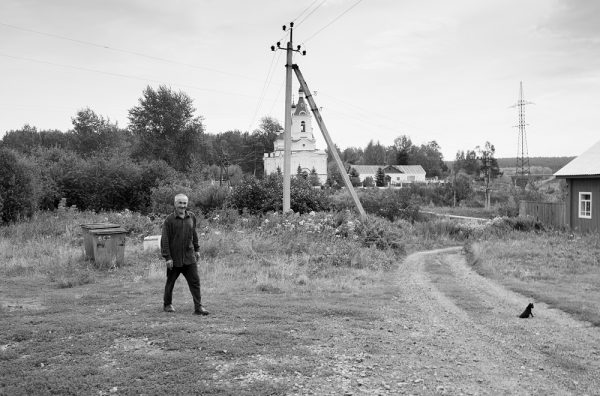
Ivan has lived in Alapaevsk his whole life. From the rooftop of his house “You can see the church of St. Catherine really well, you can go up and take a picture.”
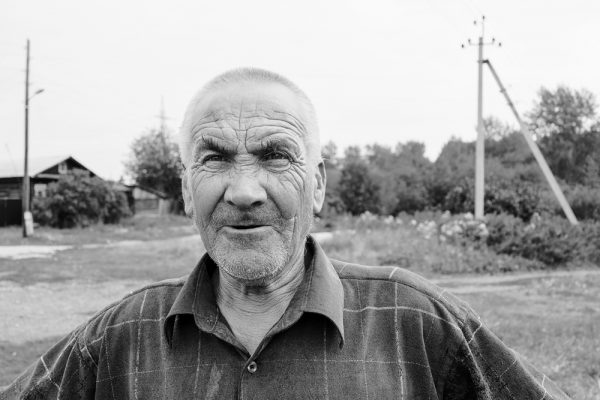
This well was consecrated in honour of New Martyr Grand Duchess Elizabeth.
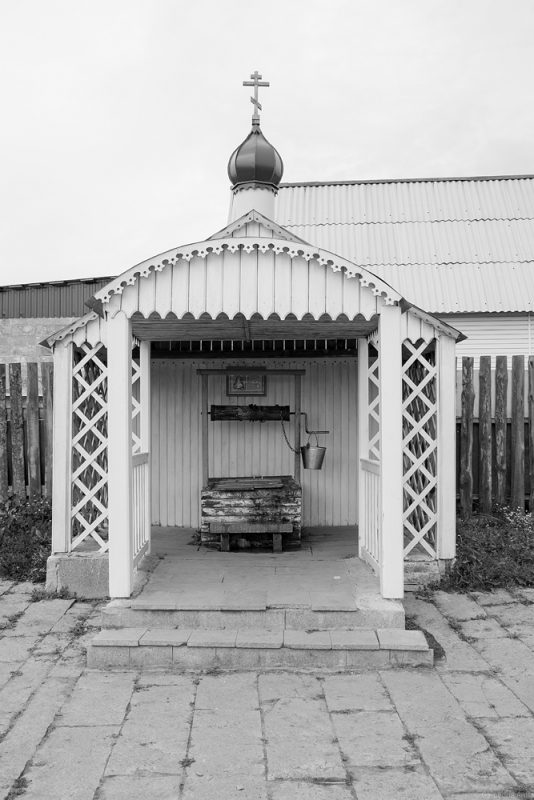
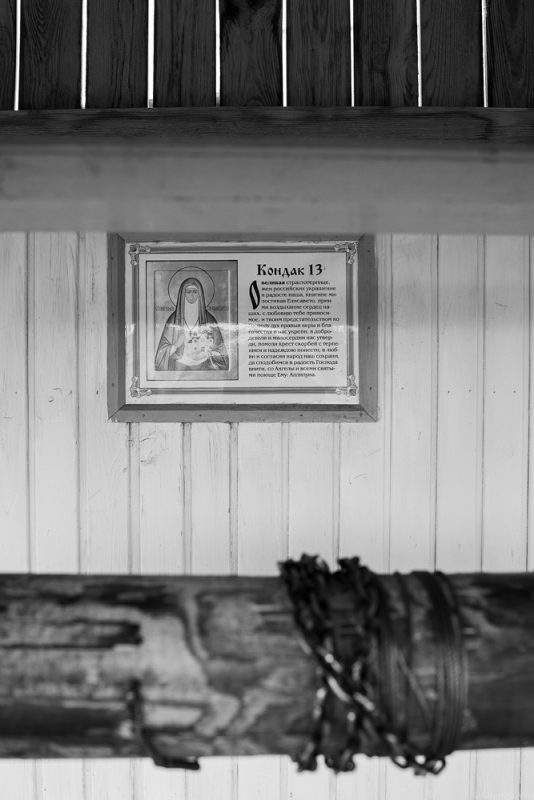
The Holy Trinity cathedral where the bodies of the Romanovs, Rassophor Nun Barbara, and Fedor Remez were transferred after a panikhida.
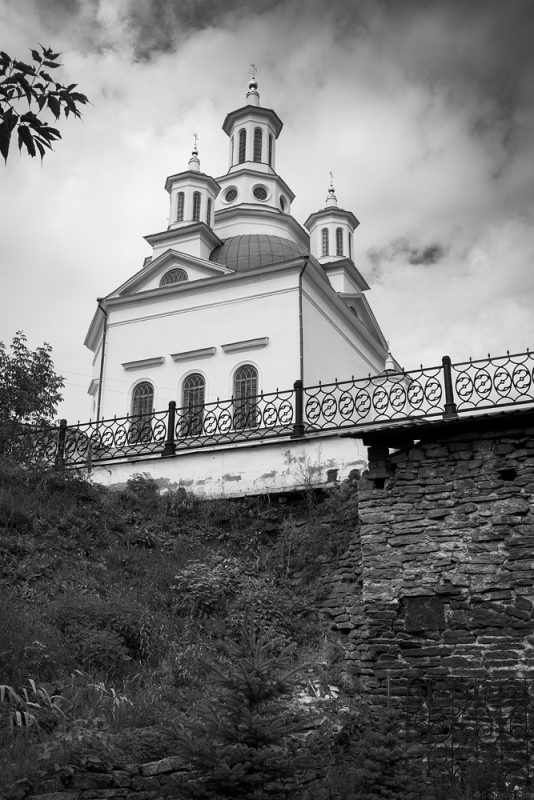
This is where the funeral service was officiated for the assassinated. The bodies were then moved to a crypt built on the south side of the altar of the Holy Trinity Cathedral; the entrance was afterwards bricked off.
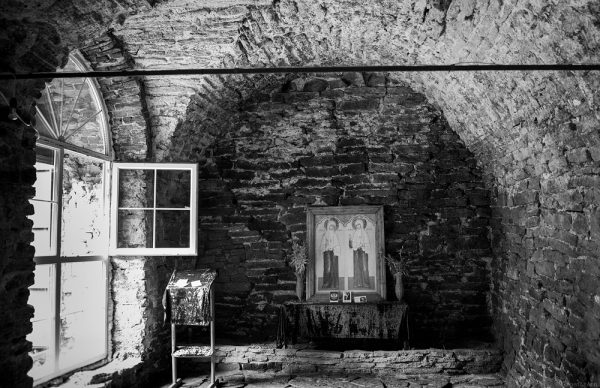
The martyrs’ bodies remained there until July 14, 1919 when the decision was made to move the martyrs’ coffins from Alapaevsk as the Red Army had gone on the offensive.
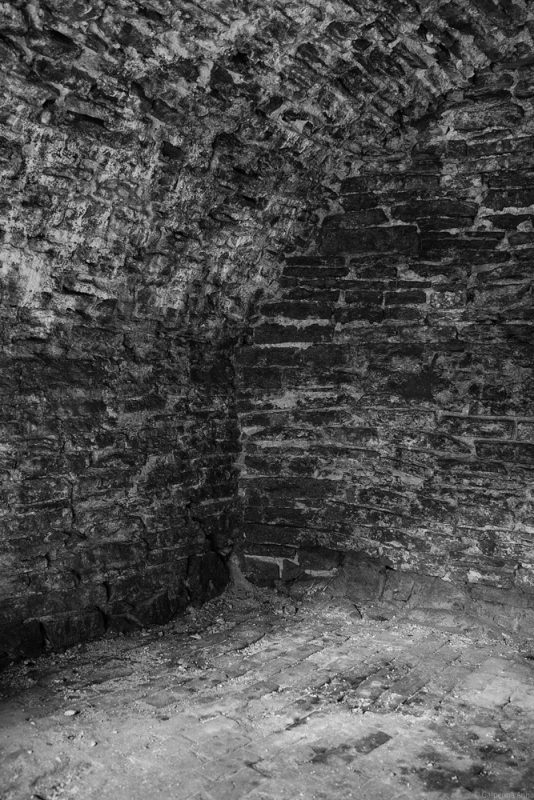
Today, there is an icon of the Holy New Martyrs Elizabeth and Barbara in the crypt; services of supplication are held there.
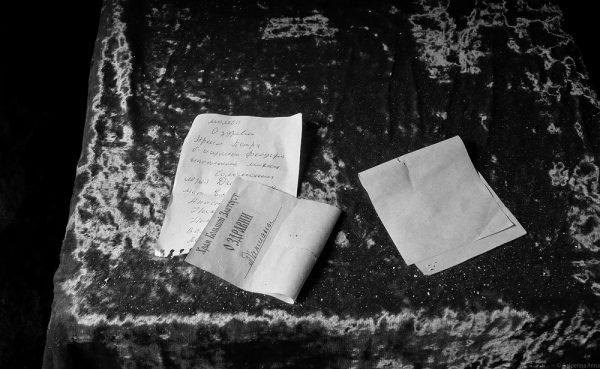
There is an issue of “Pravoslavie i mir” (“Orthodoxy and the World”) attached to the doors of the Holy Trinity cathedral.
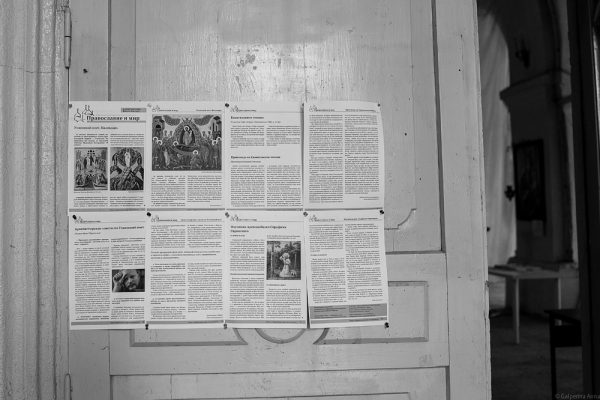
The Holy Trinity cathedral of Alapaevsk is one of the oldest churches of the Ekaterinburg diocese. It was built in 1702 on donations from parishioners, workers of the Neivo-Alapaevsk factory.
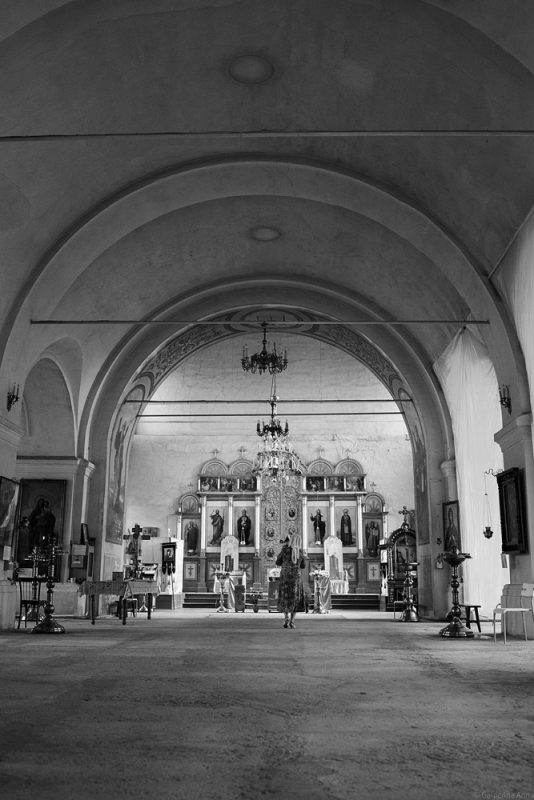
The cathedral was closed during Soviet times; a mill and a bread factory were set up inside it.
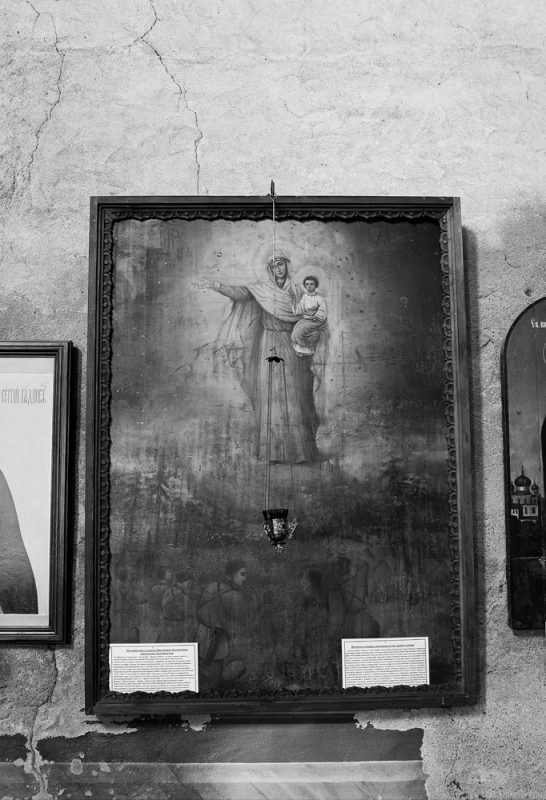
Restoration works began in 1991.
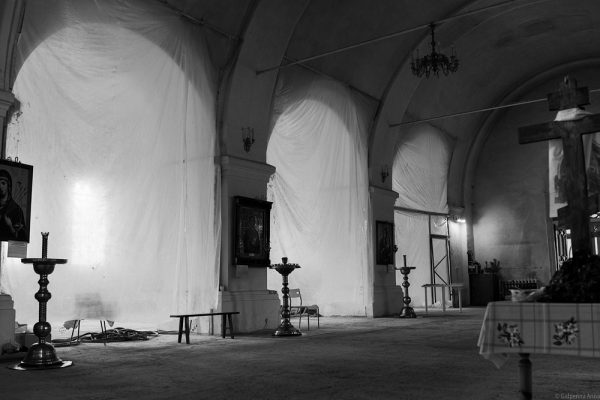
However, a lack of funds prevents the completion of the restoration, which has been going on for more than twenty years.
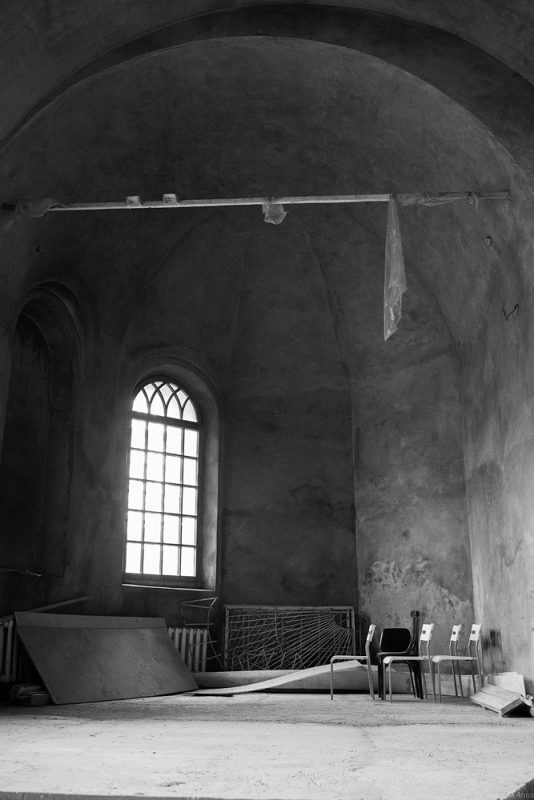
On June 8, 1999 the cathedral was consecrated by Archbishop of Ekaterinburg and Verkhoturie Vikentii.
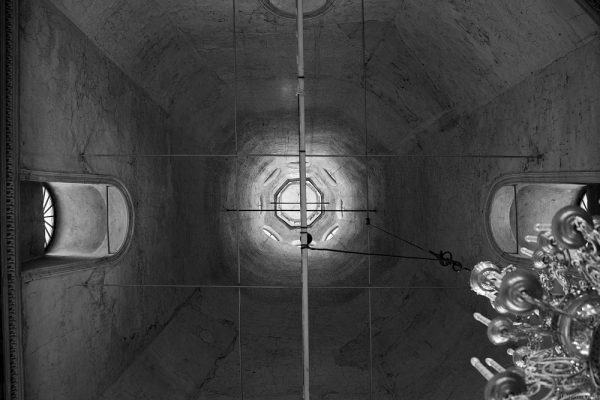
The Holy Trinity cathedral was made an Archbishop’s podvorie (metochion) in 1992.
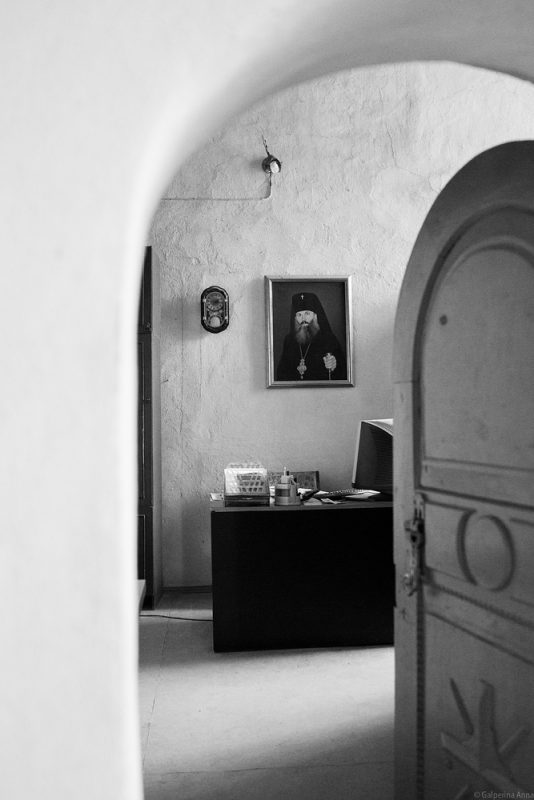
The years of 1918-1919 in the history of Alapaevsk made this town known in the whole world. It is here that were martyred Grand Duchess Elizabeth, Rassophore Nun Barbara (Yakovlev), Grand Duke Sergei Mikhailovich, HRH Prince Ioann Konstantinovich, HRH Duke Ioann Konstantinovich (the Younger), HRH Prince Igor Konstantinovich, Prince Vladimir Pavlovich Palei and Feodor Semenovich Remez, secretary of HRH Grand Duke Sergei Mikhailovich.
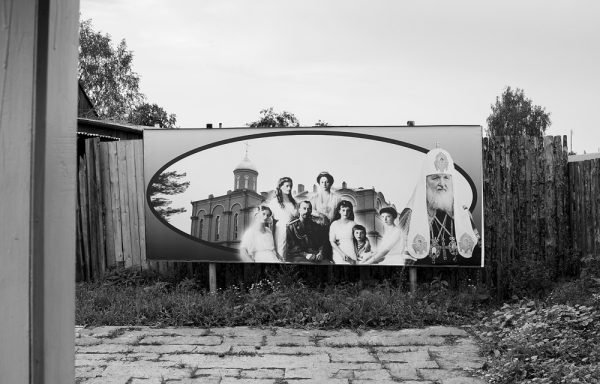
Translated from the Russian by Maria Nekipelov












